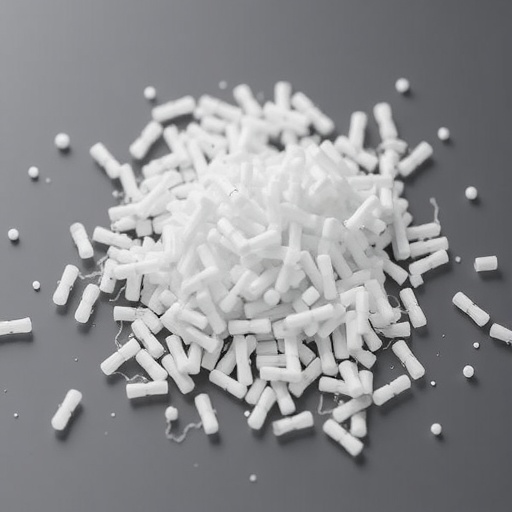In a surprising turn amid escalating trade tensions, China has pledged to assist the United States in tackling the deadly Fentanyl epidemic by imposing stricter controls on precursor chemicals, key ingredients used in the production of the synthetic opioid. Treasury Secretary Scott Bessent announced this breakthrough on Wednesday during a press briefing in Washington, D.C., framing it as a pivotal element of a broader trade framework negotiated between the two superpowers.
- Treasury’s Bombshell Announcement: China Agrees to Regulate Fentanyl Precursors
- Tracing the Fentanyl Pipeline: How Precursor Chemicals Fuel the Opioid Crisis
- American Heartbreak: Stories from the Frontlines of the Fentanyl Epidemic
- Navigating Diplomatic Hurdles: What Stands Between Promise and Progress
- Path Forward: Global Ripple Effects and US Recovery Horizons
“This agreement represents a significant step forward in our joint efforts to combat the opioid crisis that has ravaged American communities,” Bessent stated. “By targeting precursor chemicals, we’re striking at the root of drug trafficking networks that fuel this tragedy.” The revelation comes at a time when Fentanyl-related deaths in the U.S. have surged, claiming over 70,000 lives in 2023 alone, according to the Centers for Disease Control and Prevention (CDC).
Treasury’s Bombshell Announcement: China Agrees to Regulate Fentanyl Precursors
The announcement by Treasury Secretary Bessent marks a rare instance of China cooperation on a public health issue that has long strained U.S.-China relations. During the briefing, Bessent detailed how the agreement emerged from months of intense negotiations during the recent U.S.-China trade summits. “We’ve been clear with our Chinese counterparts that addressing the fentanyl flow is non-negotiable in any trade deal,” he emphasized. “This isn’t just about economics; it’s about saving lives.”
Under the new framework, China will implement enhanced monitoring and export restrictions on specific precursor chemicals such as 4-anilino-N-phenethylpiperidine (ANPP) and norfentanyl, which are essential for synthesizing fentanyl. These substances, often legally produced for pharmaceutical purposes, have been diverted into illicit drug trafficking channels. Chinese authorities have committed to sharing real-time data on shipments and cracking down on rogue manufacturers, a move that U.S. officials hail as a game-changer.
Experts note that this cooperation builds on previous efforts. In 2019, China classified fentanyl as a controlled substance, but enforcement has been inconsistent. “This new pact includes verifiable mechanisms, like joint inspections and third-party audits, which could finally stem the tide,” said Dr. Nora Volkow, director of the National Institute on Drug Abuse (NIDA), in a statement released shortly after the announcement.
The trade framework also ties these controls to economic incentives, such as reduced tariffs on certain U.S. exports to China. While details remain under wraps pending formal ratification, sources close to the negotiations suggest the deal could unlock billions in bilateral trade, providing a carrot-and-stick approach to China cooperation.
Tracing the Fentanyl Pipeline: How Precursor Chemicals Fuel the Opioid Crisis
To understand the significance of this agreement, it’s crucial to follow the fentanyl supply chain from Chinese factories to American streets. Precursor chemicals are the unsung villains in the opioid crisis, serving as the raw materials for fentanyl production. These compounds are shipped from China— the world’s leading producer—to cartels in Mexico, where they are transformed into the potent drug and smuggled across the U.S. border.
According to a 2023 report by the United Nations Office on Drugs and Crime (UNODC), over 90% of the precursor chemicals seized in fentanyl labs originate from China. The ease of online ordering and lax oversight has allowed traffickers to procure tons of these substances annually. “It’s like supplying the bricks for a house of horrors,” remarked Homeland Security Secretary Alejandro Mayorkas during congressional testimony last year. “Without controlling these precursors, we’re fighting symptoms, not the disease.”
The drug trafficking ecosystem thrives on this vulnerability. Mexican syndicates, such as the Sinaloa Cartel, have industrialized fentanyl production, mixing it into counterfeit pills that mimic prescription opioids like OxyContin. A single kilogram of fentanyl precursors can yield enough drug to kill millions, highlighting the crisis’s scale. In 2022, U.S. Customs and Border Protection intercepted over 27,000 pounds of fentanyl at the southern border, a 400% increase from five years prior.
China’s role has been contentious. Beijing has argued that the U.S. opioid crisis stems from domestic demand and pharmaceutical over-prescription, but recent data shows a shift. A joint U.S.-China task force established in 2021 identified over 200 Chinese companies involved in exporting precursors illegally. This agreement aims to dismantle those networks through targeted sanctions and collaborative enforcement.
- Key Precursors Targeted: ANPP, NPP (N-phenethyl-4-piperidone), and designer variants that evade current regulations.
- Export Volume Reduction: China pledges a 50% cut in precursor shipments to high-risk destinations within two years.
- Technology Sharing: AI-driven monitoring systems to detect suspicious transactions.
By choking off the supply at the source, this initiative could reduce fentanyl availability in the U.S. by up to 30%, per estimates from the RAND Corporation, a nonpartisan think tank.
American Heartbreak: Stories from the Frontlines of the Fentanyl Epidemic
Behind the statistics lies profound human suffering. The fentanyl crisis has torn through families across America, from rural towns in Appalachia to urban centers in California. In Ohio, dubbed ground zero for the opioid crisis, overdoses claimed 5,000 lives in 2023—more than traffic accidents and gun violence combined, according to state health officials.
Take the case of Maria Gonzalez, a 42-year-old mother from Los Angeles whose son, Alex, died from a fentanyl-laced pill in 2022. “He thought he was taking Xanax to cope with anxiety, but it was poison,” Gonzalez shared in an emotional interview with CNN last month. Stories like hers underscore the deceptive nature of drug trafficking, where fentanyl is often mixed unknowingly into other drugs, amplifying its lethality—it’s 50 times more potent than heroin.
Nationwide, the CDC reports that synthetic opioids like fentanyl drove 75% of the 107,000 drug overdose deaths in 2022. Economic impacts are staggering: The crisis costs the U.S. economy $1 trillion annually in healthcare, lost productivity, and criminal justice expenses, per a study by the American Action Forum. Rural communities bear a disproportionate burden, with death rates 50% higher than in urban areas.
Advocacy groups like Families Against Fentanyl have long called for international action. “China cooperation is the missing piece,” said executive director Breanne Bogle. “We’ve seen progress with pill presses and pill binders, but precursors are the lifeblood. This deal gives us real hope.”
Government responses have ramped up domestically too. The Biden administration’s 2023 budget allocated $1.5 billion for addiction treatment and border security, including fentanyl detection dogs and X-ray scanners. Yet, officials admit that supply-side measures like this new pact are essential to complement demand-reduction efforts.
- Demographic Toll: Young adults aged 25-34 account for 40% of fentanyl deaths.
- Geographic Hotspots: West Virginia, Kentucky, and New Mexico lead in per capita overdose rates.
- Intervention Successes: Naloxone distribution has reversed over 26,000 overdoses since 2017.
Personal narratives continue to drive policy. At a White House roundtable last week, survivors and bereaved families urged swift implementation of the China deal, emphasizing that every delayed shipment of precursors means more lives at risk.
Navigating Diplomatic Hurdles: What Stands Between Promise and Progress
While the agreement sparks optimism, skeptics warn of implementation challenges in fostering China cooperation. Historical precedents, like the 2018 U.S. tariffs that prompted China’s initial fentanyl scheduling, show that progress can be fleeting amid geopolitical frictions. Trade wars, human rights disputes, and Taiwan tensions could derail enforcement, analysts say.
“Enthusiasm is warranted, but verification is key,” noted Bonnie Glasser, director of the German Marshall Fund’s Asia program, in a Foreign Policy op-ed. “China must demonstrate transparency; otherwise, this risks becoming another diplomatic footnote.” U.S. lawmakers, including Senate Foreign Relations Committee Chair Bob Menendez, have introduced bills mandating annual reports on China’s compliance with precursor controls.
Domestically, drug trafficking routes adapt quickly. As precursors become scarcer, cartels may turn to synthetic alternatives or domestic production. A 2023 DEA intelligence report warns of emerging labs in India and Southeast Asia, necessitating a multilateral approach. The U.S. is pushing for similar commitments from those nations through forums like the G7 and UN.
Legal hurdles also loom. China’s regulatory framework for chemicals is fragmented, with thousands of small firms operating in gray areas. The agreement includes capacity-building aid—U.S. experts training Chinese inspectors—but cultural and bureaucratic differences could slow rollout. “It’s a marathon, not a sprint,” Bessent acknowledged, pledging ongoing dialogue.
Positive signs abound: In a parallel development, Chinese President Xi Jinping reiterated commitment to global drug control during a virtual summit with President Biden last month. Joint operations have already led to the seizure of 10 tons of precursors since January, per State Department figures.
Civil society plays a role too. NGOs like the Partnership for a Drug-Free America are partnering with Chinese counterparts to raise awareness, focusing on youth education to curb demand on both sides of the Pacific.
Path Forward: Global Ripple Effects and US Recovery Horizons
Looking ahead, this U.S.-China pact could reshape international drug trafficking dynamics, inspiring similar deals worldwide. The World Health Organization (WHO) has praised the initiative as a model for transnational threats, potentially influencing controls on other synthetic drugs like nitazenes. For the U.S., success metrics include a 20% drop in overdose deaths by 2025, as targeted by the White House’s overdose prevention strategy.
Recovery efforts are gaining momentum. Expanded access to medications like buprenorphine and methadone, coupled with harm reduction programs, has shown promise. In states like Rhode Island, comprehensive approaches reduced opioid deaths by 20% in 2023. “If we secure the supply chain, we can focus on healing,” said Health and Human Services Secretary Xavier Becerra.
Economically, the trade framework promises stability. By linking precursor chemicals controls to market access, it incentivizes sustained China cooperation. Investors are watching closely; pharmaceutical stocks rose 2% following the announcement, betting on reduced illicit competition.
Ultimately, this deal underscores a shared stake in stability. As fentanyl’s shadow lengthens globally—with rising deaths in Canada and Europe—the U.S. and China stand at a crossroads. Effective implementation could not only alleviate the opioid crisis but also rebuild trust, paving the way for broader collaboration on climate, tech, and security. For now, families waiting for relief hold onto the promise: a world where fentanyl precursors are locked away, and lives are reclaimed.








